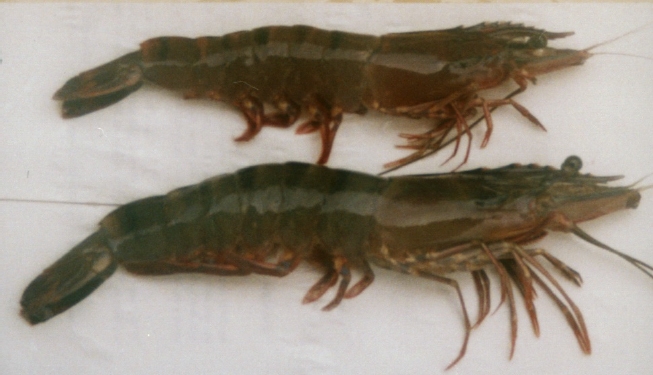CAUSE
Genus Okavirus belongs to Roniviridae, order Nidovirales (according to Mayo, M. A. 2002)
– Nucleocapsid in the form of twisted tubes and rod-shaped viruses (virions) with a sheath, shaped like yellow-headed viruses.
– Size of nucleocapsid: 16-18 x 166-435nm
– The nucleic acid is RNA
SYMPTOM
GAV virus is often present on healthy shrimp
– Chronic GAV-infected shrimp, the viral body located in the infected cells of the Lymphocytes (LO), encountered in natural and farmed tiger shrimp, there are few signs of pathology.
– Shrimp with acute GAV infection, the virus is common in wild shrimp and can occur in farmed black tiger shrimp. Shrimp are comatose, have poor appetite and swim on the surface and near the pond shore. The body appears crimson in the appendages, the gills turn pink and yellow.


DISTRIBUTION
The disease has only recently been reported to be naturally infected in australian tiger shrimp. Experimental infection caused in shrimp P. esculetus, P. merguiensis, P. japonicus
– The results of diagnosis using RT-PCR tiger shrimp technique in Vietnam with YHD/GAV infection are very high. In fact, YHD/GAV disease is less common in commercial ponds.
– Have encountered some schools in tiger shrimp ponds appearing red shrimp torso, red legs and causing mass death, but the WSSV test is negative.
– There have been cases of some flocks of shrimp parents catch for birth, shrimp appear red body, red gills, when checked under the science and technology there is stick-shaped virus in the gills
– Parents’ tiger shrimp when fishing in the open sea or in lagoons with the phenomenon of red disease after fishing for 3-4 days, mortality rate up to 80-100%, the time when sick shrimp die much in March-April (after Tet). The electron microscope tested for stick-shaped viruses and the RT-PCR tested positive for GAV.
The disease is transmitted along the horizontal and vertical axis from mother to child.
PREVENTION
Applied according to the method of integrated disease prevention. Avoid transporting silk shrimp where the disease has not yet developed to limit the spread of the surrounding area. Dead shrimp are removed from the pond, preferably buried in heated lime or burned. The silk of the diseased shrimp pond does not discharge the tile treated with heated lime or with lime chloride (according to the method of removing the pond). Consider shrimp regularly, if there are signs of disease detected, it is best to harvest immediately. If the shrimp is too small to be harvested, it is necessary to treat the pond water before removing it.
Source tepbac.com

 Tiếng Việt
Tiếng Việt Indonesia
Indonesia